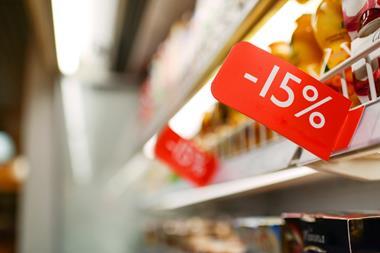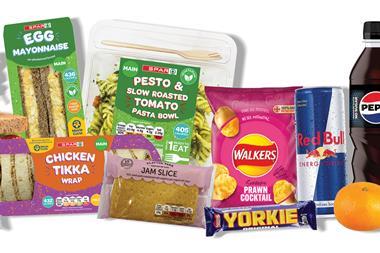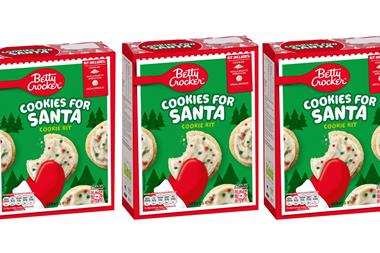As well as considering health issues, retailers need to be looking at those products which provide parents with convenience.
Rosie Tapp of Bel UK says that busy parents mean busy convenience stores in the run up to the start of school. “The lunchbox opportunity for convenience store retailers is huge as many parents are time poor and seeking products that reduce preparation time,” she says. “Creating a back-to-school feature in store can help promote sales as time-short parents will be able to find all the goods they are looking for in one place.”
Tapp says that parents want a selection of products that combine health and convenience. “Lunchbox npd has been influenced by the continued trend towards healthier and more natural products,” she points out. “Consumers continue to look closely at the nutritional content of their packed lunch, seeking out products that contain natural ingredients.
“Mini Babybel Original caters for this trend and is perfect for the lunchbox as it’s individually wrapped, is easy to transport and has the added value of being portion controlled.”
Successful lunchbox products, it seems, are those that find the balance between taste and health. Helen Cridge, UK category insight manager at FrieslandCampina, which manufactures Yazoo, says that a product also needs to appeal to both parents and children if it is to be successful.
“Juggling the health concerns of parents and the taste expectations of children can be a tricky act, but if a brand gets the balance right it can prove lucrative for both them and the retailer,” she says.
retailer’s view Kishor Patel
“We see a lot more bread being sold when it comes to back-to-school time as parents want to make their children’s lunches themselves. Smaller snacks really sell well around this time, especially those that are healthy.
“We also have a meal deal selection that does really well with customers. It’s £3 and covers a wide range of products. The most popular choice is usually a sandwich, a packet of crisps and a drink, but we make sure that there is a variety. People get bored quite easily and you want to give them some choice.” Kishor Patel, Nisa, Bedfordshire
Products within the flavoured milk market seem to have got the balance just right, with overall sales increasing year on year by 16% and now worth £175m (Nielsen Soft Drinks Category Report April 2011).
In the impulse sector, Yazoo currently takes a 57% share of the market and Cridge says that its health credentials give it the edge. “All of the products in the Yazoo range contain less than 5% added sugar, making them eligible to be sold in schools,” she explains.
Cridge believes that promotions play a big part in generating sales for the back-to-school market. “The back-to-school period provides retailers with added sales opportunities that they should make the most of,” says Cridge. “They can do this by creating a clearly signposted ‘back to school’ category within the store, using all of the best lunchbox fillers.”
To help with this, the Yazoo after-school activities campaign will be returning for the start of the new term. From August, children aged between five and 11 will be able to claim tickets for activities such as tag rugby, cheer-leading and tennis, offering savings of up to £15 for parents.
“During the busy back-to- school period, it’s great to be able to offer parents extra value and give something back to them,” adds Cridge. “Offering additional value to consumers is at the core of all Yazoo activity, as well as encouraging children to participate in sports to remain active and healthy.”
To ensure they pass the health test, other soft drinks categories have been making changes. Panda Soft Drinks recently revamped its range to ensure that its products remain child friendly.
Top 10 Chocolate biscuit brands
(excluding private label) 1Kit Kat
2 Penguin
3 Rocky
4 Blue Riband
5 Twix
6 Club
7 Tunnock Chocolate Wafer
8 Breakaway
9 Cadbury Time Out
10 Fox Bars
Source: Nielsen ScanTrack 52 weeks ending May 14, 2011
“This year Panda refreshed its range to reinforce its healthier credentials within the soft drinks market and to offer reassurance to mums purchasing soft drinks for their children,” says Panda brand manager James Nichols. “Panda Pops, the fizzy option in the portfolio, has been discontinued, leaving Panda Still Juice Drink and Panda Still Flavoured Water.”
Nichols says that Panda Pops wasn’t necessarily unhealthy, but rather it no longer fitted with what parents expected from a lunchbox soft drink.
“Despite Panda Pops having healthier ingredients than many of its competitors, Panda recognised mums’ concerns around fizzy drinks and the impact that having a fizzy drink in the portfolio had on the perception of the brand,” he says. “By removing Panda Pops, the Panda range can confidently promote the healthier credentials of its still juice drinks and flavoured waters, which contain no added sugar, artificial colours or flavours.
“The transparent bottle clearly highlights its health credentials to inform and reassure mums.”
One way that some brands are helping parents feel more comfortable about what their children consume is by providing portion-controlled packs.
According to Fox’s Biscuits senior business director Rachel Moffat, mini bags of biscuits saw a 7.2% growth in the past year and the market is worth £51.9m (Nielsen ScanTrack 52 weeks ending May 14, 2011).
Moffat says that the sector sees faster growth during the back-to-school period than throughout the rest of the year. She explains that there is a trust among parents for both the pack size and the brand.
“Portion-controlled packs are essential as children can have a treat, but mum knows exactly what her child is consuming,” says Moffat. “‘Retro brands can be very important, too for example, Mini Party Rings offer opportunities as a lot of parents remember them from when they were younger. They’re a trusted product.
Back to school
Earlier this year Pritt unveiled a new image for the product that highlighted its environmentally friendly credentials. It now has a new formula that is made up of 90% renewable ingredients and can be applied more smoothly than before. To coincide with this reformulation, the company also gave brand icon Mr Pritt a makeover to match and introduced him on to packs for the first time.
Pritt’s revamp couldn’t have come at a better time as it gears up for the back-to-school season.
“Back to school is a really key event for the glue stick category, and for Pritt in particular,” says brand category management director Baptiste Chièze. “The glue stick category was worth more than £13m in 2010 and just under 25% of that value was driven through two months during back to school (August and September), of which Pritt contributed 64%.”
Chièze adds that this share increases in the months leading up to the new school year. “This rose to 70% during back to school, making it the biggest event of the year for the Pritt Stick,” he says.
“Going back to school can be a stressful time for kids and their parents,” says Chièze. “It is important to focus on back-to-school products as there is an expectation from customers that these will be readily available. This gives the retailer an opportunity to increase footfall in their stores if they have the right offering.”
Chièze advises retailers to get in early with their stationery products to ensure that they make the most of the category. “We advise retailers to start promoting the back-to-school ranges early on in order to prevent missing out on any sales opportunities and also to raise awareness in advance of the critical August and September times.”
Read more
Cash in: Lunchbox - Healthy balance
Cash in: Lunchbox - Need the bread
Cash in: Lunchbox - Grown-up thinking
Cash in: Lunchbox - Ones to watch






















5 Readers' comments